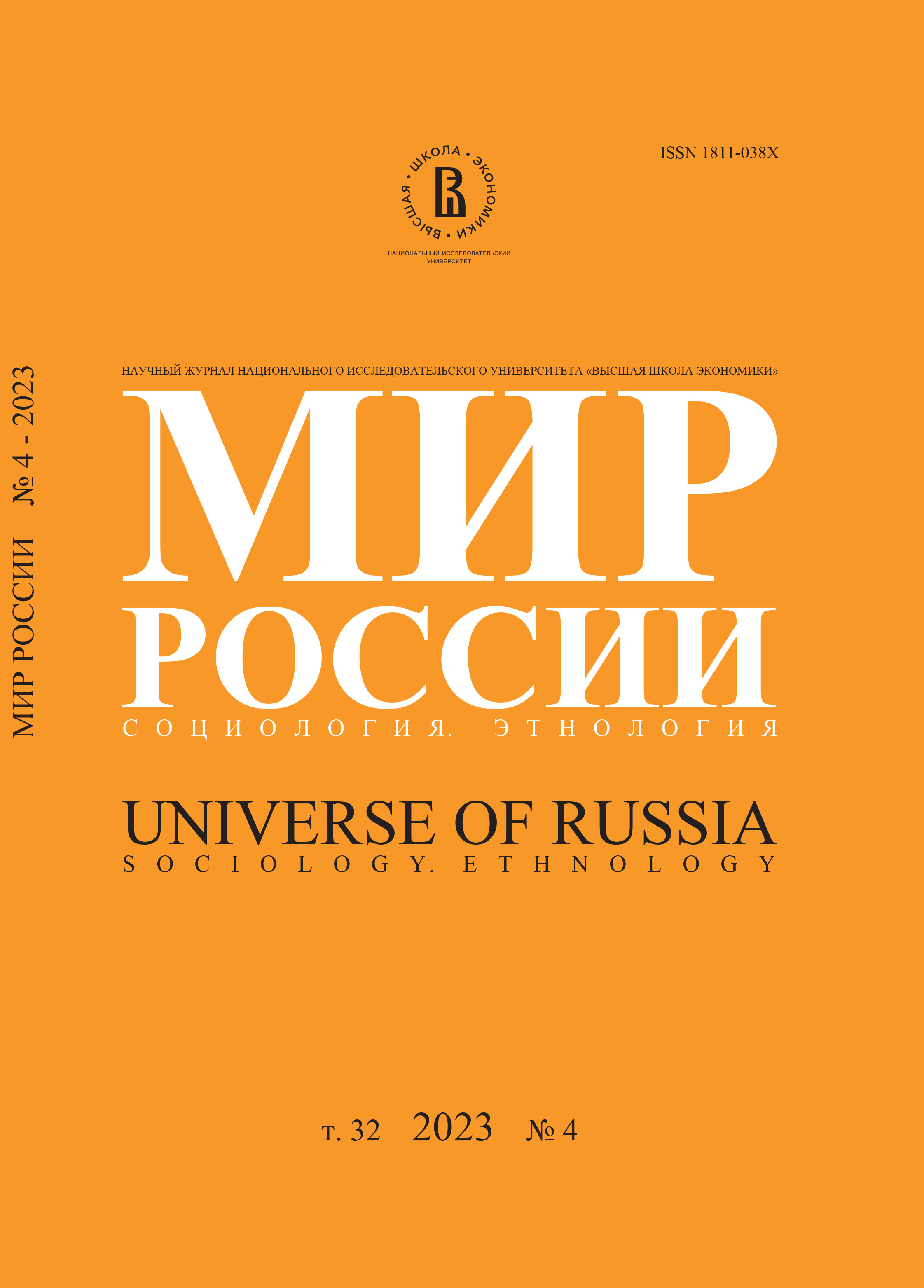The Compensatory Function of Religious Institutions in the Society’s Institutional Matrix
Abstract
This paper tests the hypothesis of the immanent compensatory nature of religious institutions in socio-cultural systems. The methodological basis of the research is the neo-institutional approach supplemented with the theory of institutional matrices. The case of Russia, with a dominating X-type institutional matrix, is employed to demonstrate the compensatory function performed by Orthodox Christianity from the very moment of its adoption. The decentralization of the Orthodox Church, the existence of deposits upon entering a monastery, the absence of monastic orders with their rigid system of command and control, the presence of wandering monks, holy fools, and fraternities demonstrated the dominance of Y-matrix institutions in the organization of religious life in the pre-Petrine period. In this way, religious institutions compensated for the highly centralized nature of Russian society, where X-matrix institutions were dominant. Peter the Great’s reform, aimed at restructuring church life according to the Western model, deformed the important compensatory function of religious institutions. As a result, it sparked social resentment that manifested itself in the spread of religious sectarianism, namely, the long-lived and ineradicable Russian sect, the Khlysts. The Khlyst sect was an organization dominated by Y-matrix institutional forms in economic, political, and ideological terms. It split from the Orthodox Church, which was undergoing a transformation to the X-matrix type. However, having become a complementary institution in the structure of the religion of the Russian state, the Khlyst sect was unable to fully ensure a compensatory function or to smooth out the institutional imbalance in the entire Russian society on the eve of the Russian revolutions. The function of religious institutions in Y-matrix societies is also considered. It is shown that the Catholic Church, having a rigid hierarchy and strict discipline, initially had the characteristics inherent in X-type sociocultural institutions. However, the excessive enforcement of redistributive institutions in the sociocultural domain spurred the emergence of the compensatory religious movement of Catharism (and one of its branches—Albigensianism). With the decomposition
of Feudalism and centralization (strengthening of X-type political institutions in the matrix), the rigid structure of the Catholic Church weakened and transformed, which led to the foundation of Jansenism, denying free will and calling for the fostering of redistributive elements within religion.
The appearance of different branches of Protestantism is related to different political institutional forms in Western countries. Lutheranism arose and spread in the principalities of Germany and supplemented German absolutism with its mild doctrinal structure. In the development of Lutheranism, the compensatory function of religion is manifested, striving to restore the institutional balance in German society, which at that time was skewed towards X-type institutions. Calvinism, with its more rigid doctrine, originated in Switzerland, which was a republic where Y-type institutions dominated the economic and political spheres. Through the spread of Calvinism, religion tried to compensate for the consequences of the active spread of market economy institutions and federal political institutions in the society, in order to strengthen national consolidation. Thus, religious institutions perform a compensatory function in the process of social transformation flanked with the emergence of new economic and/or political institutions: if the latter are market, redistributive religious institutions arise, and vice versa. Due to the utmost importance of religion, this bears witness to the impossibility of unifying the entire institutional environment market-wise or redistribution-wise. As long as political ideology is ontologically a phenomenon analogous to religion, in any liberal democratic system (market type) sooner or later sizeable forces exhibiting antiliberal trends (redistributive type) will form, and vice versa.






